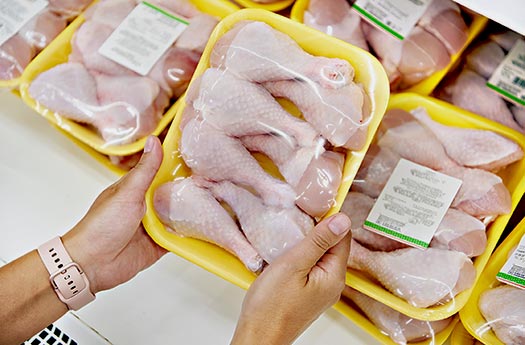The unseen properties of food packaging

When you think of the plastic films used in food packaging, there are visual and tactile differences, but these are often due to the different designs or brands. The more subtle differences in detail are not visible to the naked eye and can only be measured in a laboratory. This is because films — especially those used in food packaging — must often have a high barrier effect, for example against the effects of light. To date, the biggest challenge that this has presented has been that these barrier effects have to be applied to films which shrink by up to 30 % during the packaging process in order to keep the packaging in place.
As part of the »NEEDS« project, two coatings have now been developed that can also be used on these shrink films. The key innovation of these coatings is that both retain their properties when the substrate film is mechanically deformed. The first coating prevents surface fogging and is targeted at food products. This means that the packaged goods remain visible during storage and do not become obscured by a misty condensation. The second coating blocks a large amount of ultraviolet radiation. This extends products’ shelf life, as many biochemical reactions responsible for food spoilage are initiated or accelerated by UV radiation.
On the move with nanocomposites
One of the objectives of the project was for the protective coatings to also remain stable during the shrinking process. Traditional finishing techniques to prevent the film from fogging or to block UV rays are known to chip or break during the process, causing the film to lose its properties.
The newly developed coatings, on the other hand, interact strongly with the substrate film by forming a strong chemical bond, but the cohesion within the layer remains low. Figuratively speaking, picture many large glass spheres being pulled closer together. The distance between each ball decreases, but the balls themselves remain undamaged. By comparison, previous coatings have been more like a fixed plate of glass. If it contracts, it will crack and break. This special property of the new coatings means that the coatings only move slightly closer together during shrinkage, but are not damaged.
In addition, the »NEEDS« project successfully demonstrated that these coating systems can also be used on a large scale.
Project term: |
2019 to 2022 |
Project management |
„2+2“ Programm, Bundesministerium für Bildung und Forschung (BMBF) |
Project partners: |
|
 Fraunhofer Institute for Process Engineering and Packaging IVV
Fraunhofer Institute for Process Engineering and Packaging IVV